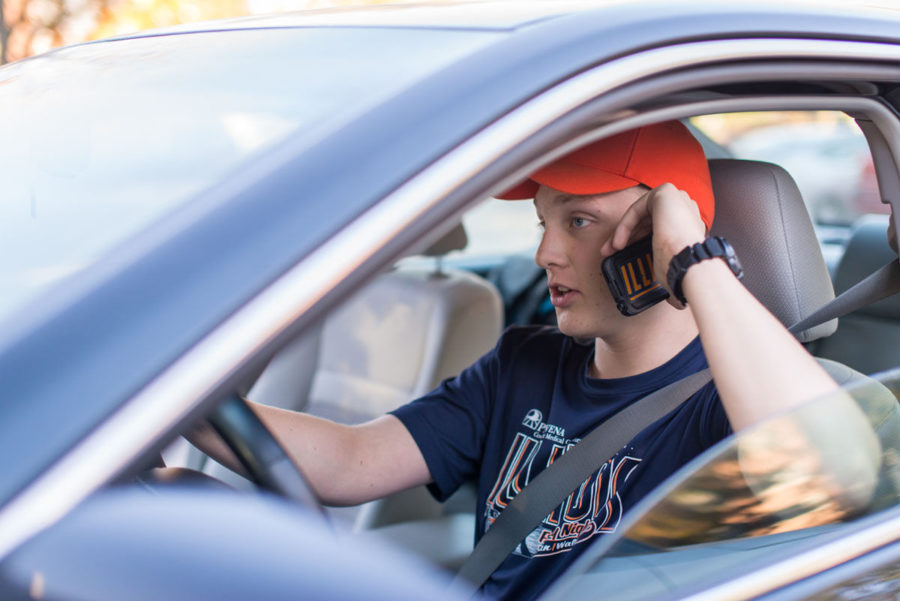Study finds video chatting safer than talking on cellphones
October 21, 2014
At least nine people are killed every day and 1,153 are injured in car crashes due to distracted driving, according to Centers for Disease Control and Prevention. . Several researchers found hands-free video chatting to be a safer alternative to talking on hand-held cellphones while driving.
The study was conducted at the Beckman Institute and Simulator Lab and led by Arthur Kramer, psychology professor and director of the Beckman Institute for Advanced Science and Technology; John Gaspar, alumnus of the Beckman Institute and research scientist at the National Advanced Driving Simulator at the University of Iowa; Kyle Mathewson, member of the Beckman Institute Fellows and Matthew Windsor, graduate research assistant at Beckman and Whitney Street, Beckman graduate student.
The study had 48 participants who experienced different driving scenarios created by the researchers.
“In the United States, there are laws against using hand-held cell phones when you drive and no laws against using the Bluetooth hands free cellphone,” Kramer said.
However, Kramer added that there’s no difference in accident rates between handheld and Bluetooth cellphone calls. He said the likelihood of an accident is four times more likely when you’re driving on the phone and having a conversation through cellphones.
Get The Daily Illini in your inbox!
The researchers recreated complicated highway-driving scenarios and created a demanding driving situation for the participants. They then assessed how the drivers performed when they were confronted with different driving distractions, such as having to merge or break, said Gaspar.
The researchers chose to use participants ages 20 to 30 to show a higher level of driving experience and less distraction.
The study then divided the participants into pairs and gave them four different driving scenarios, which were set in a DriveSafety simulator. The scenarios included: a driver who was alone, a driver conversing with a passenger beside him or her, a driver talking to someone through a handheld cellphone and a driver talking to another person through a two-way video chat that showed the person on the other side of the video the driver and the view in front of the driver.
Researchers went into the study knowing that cellphones are more problematic than having a passenger in the car; however, they wanted to find a safer way to hold a conversation with someone at home.
“Texting leads to a 400 percent decrease in the time a driver is looking at the road and more than doubles the likelihood of a crash,” said Gaspar.
The researchers found that the best way to hold a conversation is through a video chat.
“It was generally what we expected,” Gaspar said. “So there is a benefit for this novel videophone condition where people could see what was happening with the drivers even though they weren’t in the car.”
Researchers also found that remote partners who can see what is going on during a video chat generally talk more about the traffic, which benefited the driver’s safety. In this instance, the driver talked less, especially when there was busy traffic. However, Gaspar added that neither talking in-person nor through video chat is safer than driving alone.
Pedro Hernandez, junior in Civil Engineering, said he thinks driving and talking on the phone is only helpful on the highway to make sure drivers do not feel the effects of highway hypnosis.
“But if people are driving in a city, it’s better to drive alone because they need to pay close attention to the stops, lights and all that,” Hernandez said.
Gasper said his best advice to student drivers is to not be distracted when they don’t have to be.
“If you need to make a call, pull over when you are going to do that,” he said. “We know that’s the safest thing you can do.”
Liyuan can be reached at [email protected].
CORRECTION: A previous version of this article incorrectly stated that the study had 46 participants. The study had 48 participants. The Daily Illini regrets the error.







